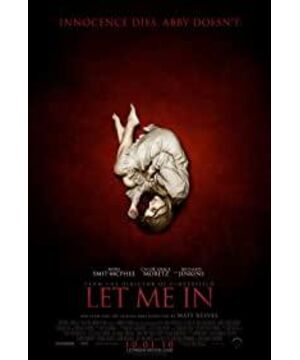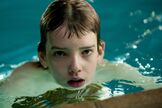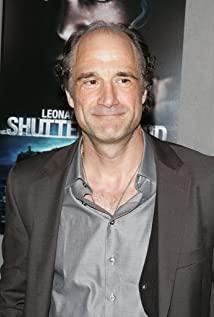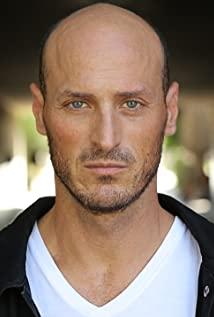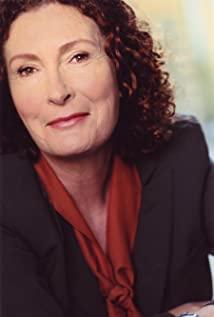Swedish writer John Lindkvist's "The Bloody Fairy Tale" has been put on the screen twice: the earlier version was produced in this country, called "Let the right one in" (Let the right one in "); later the book was bought by the Americans, and a film called "Let me in" was made. Of the three editions, including the novel, I like the American edition closest to me—despite the criticism from so many. In addition to preconceived notions and that I am a brainless fan of Ke Luo, there are also some personal emotional attitudes.
Reading this novel was not a very pleasant memory for me. It took me about a month to grind with it, and it wasn't until the second half of the book that I found a normal reading speed. The novel is the maximum refinement and exaggeration of the story, so the number of clues and characters far exceeds the carrying capacity of a film, and at the same time, its narrative speed is as long as the Swedish winter - which makes it easy to start from the film. I'm a little overwhelmed by the simple yet intense conflict.
However, the characteristics and charm of the novel are still obvious. The novel basically uses the date as the title of the chapter, and below it is interspersed with the experiences of different characters on this day. The content is mainly large-scale narration and description, and in the description, it is mostly detailed and psychological description. Such a composition makes the story naturally gloomy and depressing that are unique to the high-latitude countries of northern Europe. Also worth noting is the extremely concise language description in the novel. Oscar is taciturn except for his interactions with Avery, which is evidence of his closed character and makes the story more suffocating.
The story in the novel lasts about two months, but for the above reasons, it is often more like a unit of years. After suffocating for too long, I simply passed out, so that I missed the climax, and even the ending turned into a kind of "finally finished" excitement in the expressionless page turning.
The Swedish version of the film can be said to be an extremely successful adaptation of the original. Its plot basically retains the original arrangement, and at the same time reasonably removes the redundant parts in the original work, the main body of the story is more prominent. This is the real film version of the novel. In particular, the selection of the two characters is in line with the original to the greatest extent. Oscar's actor is a woman whose blood vessels are clearly visible under the skin, and her eyelashes and hair are pale creamy white. It's not hard to imagine how delicious he is for a blood lover. Avery is neither male nor female (I'm serious, because the original book uses "he" instead of "she" to call Avery later), and her facial features only have the softness of a girl under the background of the skirt. Although her image contradicts the strange logic of "Vampires are born beautiful", I still have to exclaim that she was the right choice - this is the real film version of the novel!
Compared with the Swedish version, the much-criticized American version can be said to be a secondary creation based on the original. In addition to further simplifying the relationship between the characters, the film also uses American thinking to reverse the direction of the story, thereby conveying a completely different value than the original.
The biggest change is actually just a cliché about vampires. It was a night of candor, and Oscar found a set of yellowed quick photos at Avery's house. The photo shows Avery, who is no different from now, and Harry when he was young wearing the bottom of a beer bottle. Avery is 12 years old, but she has been 12 for a long time. At the age of 12 "for a long time", the normal human Harry already looked like Avery's dad. The flow is accompanied by stagnation, and this kind of waiting makes people helpless. The American version of Harry became acceptable because of this arrangement. This explanation not only allowed the film to be reviewed for a while (according to the specifications of the original, things were not so fresh and beautiful), but also successfully made the last scene into my memory. Classic: The train goes into the distance in the snow, and the distance is the future known to both parties - Oscar will be the Harry II in many years.
Of course, I don't have any proof for the "Oscar = Harry No. 2" equation. He may become the only Oscar because of love or something, and it may not necessarily be the end of his life or the darkness. That's not the point. The point is, the arrangement of the vulgar plot completely dissolves the horror and blood of the story, and even the worst "Harry No. 2" ending reveals a kind of warmth and relief. Although the ending of the story is "a train carrying two people heading into the distance", the Swedish version brings only endless sadness. Questions similar to "what happens after Oscar leaves" cannot be answered, and a heart hanging in a prison without windows and doors is real despair. The orientation of the American version, or the illusion that it gave me, is the ending. The warmth and relief come from the undecided middle part that Oscar and Avery will spend together. Since they are together at the moment, there must be a pleasant surprise waiting for them before the end. After all, they were equally lonely and stubborn to find each other, and it was not easy.
To sum up, the Swedish version is too ill-intentioned in my opinion because of the desperation of the black hole capacity. In contrast, the American version of this story that turned the tide in my opinion and the "sick" value of "no matter how different the species ends, what I care about is you at the moment" reflected from it, is what I am amazed at. As for my tendency to "just give me a knife" rather than "the knife hangs on the item but it seems that the county magistrate has not completed the formalities" is my personal hobby and has nothing to do with my parents' teaching.
View more about Let Me In reviews


